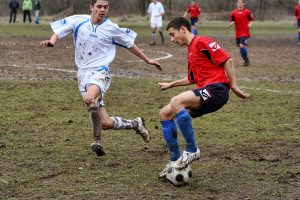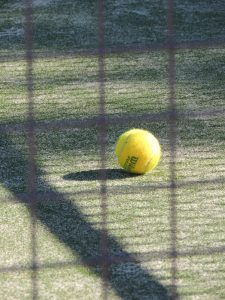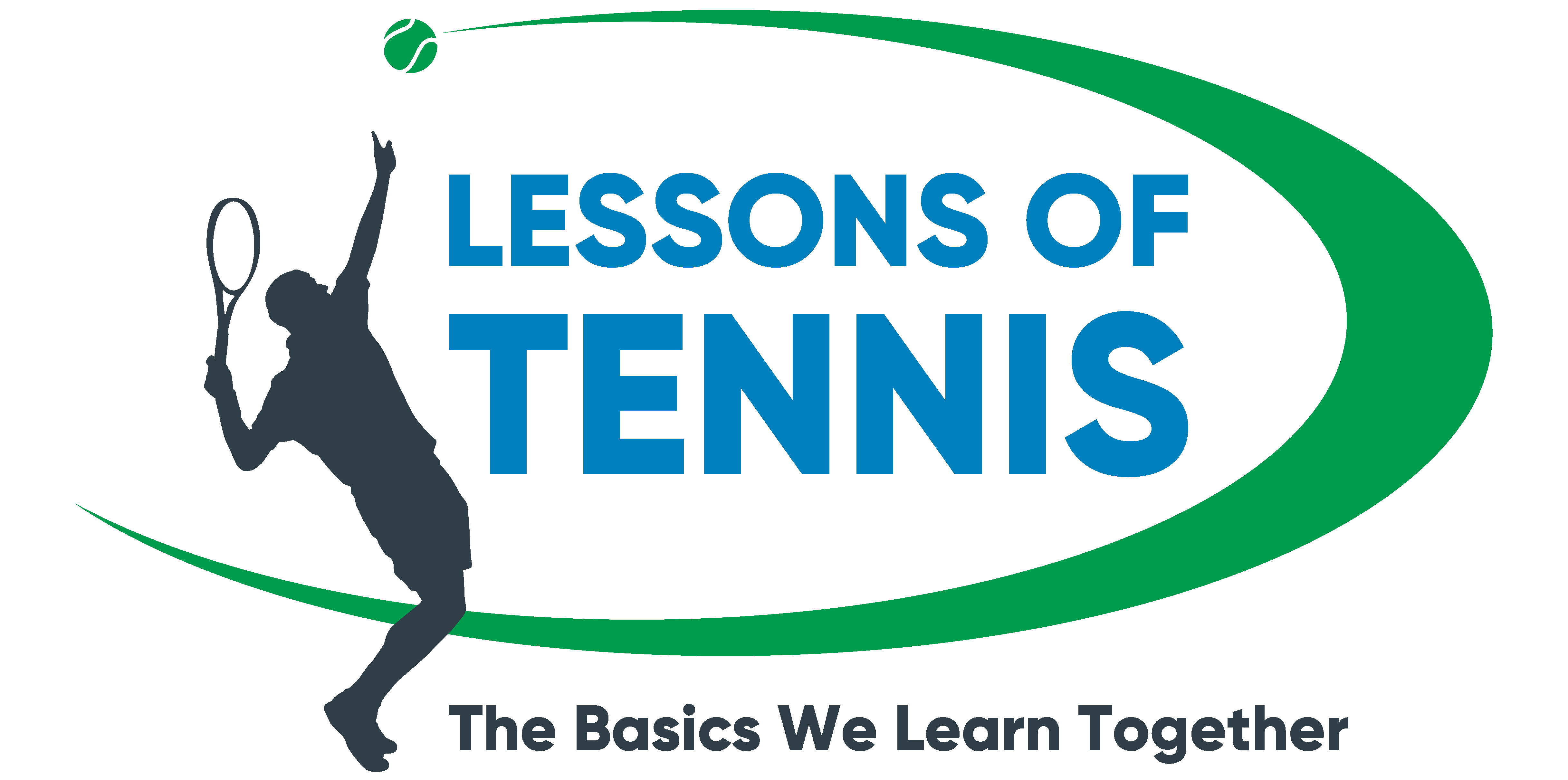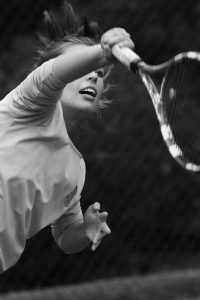The Process to Becoming a Serve and Volley Tennis Player
The first step in adopting a serve and volley style of tennis is to create a plan. This plan should include a broad goal, a few more defined goals to help achieve the broad goal, a detailed action plan to reach the more defined goal, and finally, a timeline in which to achieve this goal.
The first step, a broad goal, is to plan to become a serve and volley tennis player. This means this is the style you wish to compete with from point to point. Your gameplan is what we will begin with. The gameplan will be taylored to this style. You will go into each point knowing the things you will want to accomplish. You will decide what the contingencies are before they happen.
The beauty of this knowledge is you will know how to attack your opponent from your serve. You will be able to control the point from the toss to the end of the point. What happens during the point can be wild and chaotic, yet under your control.
Goals to Set
To be an effective serve and volley player you must master the serve, positioning, footwork, and volleys. These will be the four areas to focus on. The goal in every point in tennis is to gain “point control” and use it to your advantage. This can be done both by using your strength to your advantage and your opponents weakness to their disadvantage. The serve and volley game is an assured method of playing to your strengths and minimizing the opponents success opportunities.
The Serve
The control of a point begins with the serve. An effective first serve makes the opponent simply return the ball back in play. This allows the servers second shot to also be the dictating shot. If that shot is made at the net, the reaction time the returner has is significantly reduced. The returner is already at their most vulnerable after a return of an effective first serve, so to limit their reaction time from here can be absolutely crucial. This is the perfect time to place the ball where you need your opponent to move to. You may even see an opportunity for a winner here.
A less effective first serve that still goes in can still be more effective than a second serve. Missing your first serve and having to revert to your second serve makes the serve and volley style more difficult. When playing an advanced returner, this may be the point they are able to flip the point control to their side of the net, however. This is to be avoided as much as possible. It is always worth getting in a first serve with 90% effectiveness than a 2nd serve of any kind, simply to maintain control of the point to the server.

Positioning and Footwork
Positioning and footwork are help make the serve and volley the most effective offensive style in the game of tennis. A good server with great footwork and positioning and solid volleys should beat a great server and great volleyer with average footwork and positioning. Poor footwork will lead to poor positioning, which will allow the opponent to have another shot at gaining control of the point. Usually the second shot is an easier shot than the return, so the likelyhood of the returner gaining control has increased significantly.
How Footwork and Positioning Helps
As an example, the server hits a great serve that the returner punches back to the center of the court. The server takes one or two steps in the court, waits for the bounce, then hits a ripping forehand down the line. The returner, having had the extra time from the bounce to get to the middle of the court, is now in perfect position to hit a backhand down the line to move the server out of position, thereby removing control of the point from the server and effectively taking control themselves, depending on how they handle the next shot. The fact that there even is a next shot puts the odds of winning the point much more uncertain.
On the flip side, let’s say the server decided to continue to move forward toward the net after they served the ball, using the momentum from the service motion itself to help carry themselves forward faster than they could ever do so from a standing position. The same return from the opponent will now be in a perfect position, in the air, for an effective placement volley, positioned anywhere in the court the opponent currently is not residing, forcing the opponent to move from his spot on the court and automatically making his next shot more difficult, as it is always harder to hit on the run than from a good standing position. If the returner can track that ball down, they have almost certainly left a majority of the court open to do so and the poor quality of their shot should allow for an easy victory.
Footwork and Positioning Helps Maintain Point Control
So, the positioning and footwork allows the server to retain the point control, and moving the returner to where they want them to go to make for an average volley become a winner. This is why you don’t need a great serve or a great volley to be a great serve and volleyer. You just need great footwork and positioning.
Volley
The volley is the final shot, the one that will end the point. The time you are giving your opponent is very little, so the quicker you get to this point of the point, the better.

The Serve and Volley Plan
The focus of your practices should be the serve, footwork and positioning, and your volleys. Each one should have practices dedicated just to itself, except for a short period at the end where you go through the entire process of a serve and volley.
Service Plan
The serve should be a minimized stroke, if possible, to limit your movements and chances of not being able to consistently repeat those movements. The more you can repeat the same movements, the more effective they will become. It should be a serve that produces topspin, to put the returner on their heels. This minimizes the need for a powerful, fast serve, although that certainly helps. The serve should allow for your body momentum to carry you forward, and a good topspin serve should do that. Sometimes a flat or slice serve will have your body in roughly the same spot after the serve as before, and that won’t help push you forward toward the net. The drills you do should give focus to moving your body forward as part of the finish of the serve.
Footwork Plan
The footwork needs to keep your body in balance as you move forward. A fast serve and fast return mean you need to be prepared to move left or right in the blink of an eye. Making sure your feet don’t get crisscrossed when you land from your serve is vital. It sounds silly, but keeping your right foot to the right and left foot to the left is very important. Stay on the balls of your feet. Getting caught flat footed in no man’s land is a recipe for a loss. Doing drills that force these principals, sometimes by using a rubber band that stretches across both legs, will help promote this.
Position your Plan
Positioning goes hand in hand with footwork, as the footwork will allow for good positioning. You want to be at or inside the service line when hitting your second shot. This will give you the best chance to catch the ball in the air. If you’ve done this, your third shot, if necessary, will be undoubtedly easier. Where your opponent is positioned from your second shot forward will determine how you use your advantage. Doing a series of drills around the service line will reinforce the importance of positioning. Do some in no man’s land, then on the service line, then inside the service line. Notice the completely different strokes it takes to succeed in each of these areas, and how much easier at or just inside the service line is. And devote everything you can you getting there sooner in the point, where it matters most.
Plan to Volley
The volley, while it is going to be your put away shot, is actually the least important to work on. The reason is, if all else was executed well, then you should be volleying into a mostly wide open court. But, since rarely does everything go as planned in sports, having a quality volley can gain you control of the point, decrease your opponents positioning, and ultimately win you the point. A volley that does not move you forward is important, as getting too close to the net opens up the court behind you for your opponent to do a looping lob over your head for an easy, embarrassing winner. It must be solid and in control. You are aiming for an area of the court, not a precise location. Think of hitting into a hot tub instead of a paper plate. Stay on your toes, shoulders always perpendicular to the opponent.

Putting it All Together
Becoming an effective serve and volley tennis player requires skill in more than in the serve and way more than in the volley. Footwork and positioning are the true keys that unlock the greatness this style can unleash. Just ask Pete Sampras!

